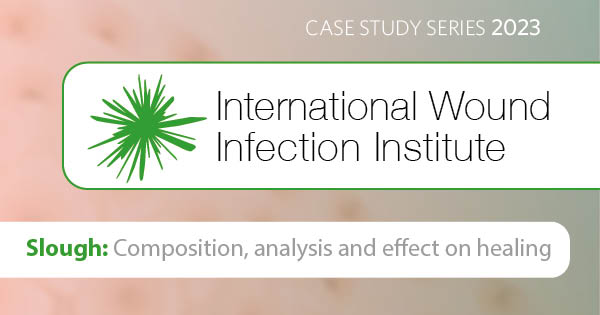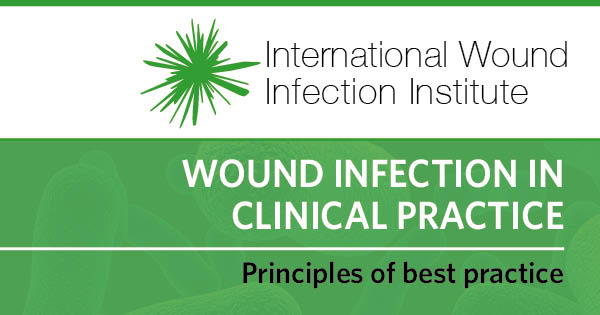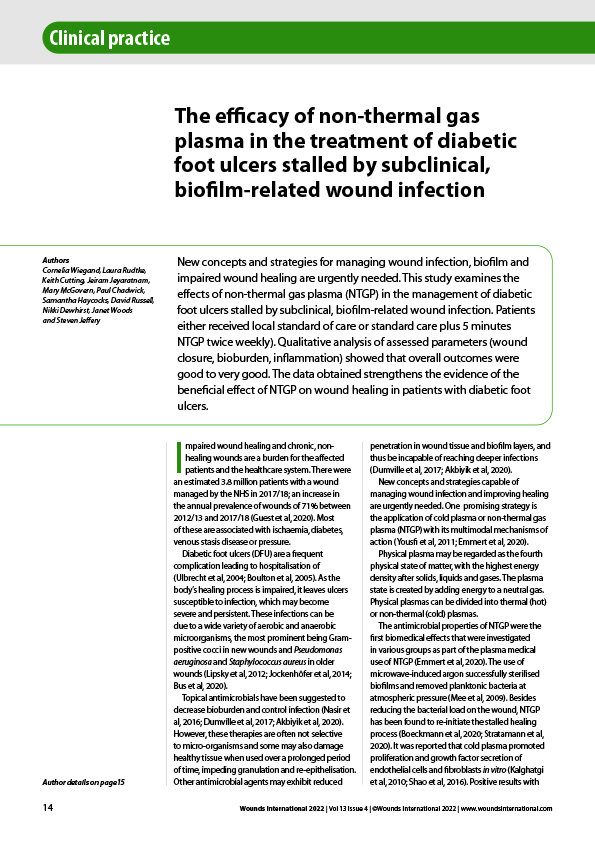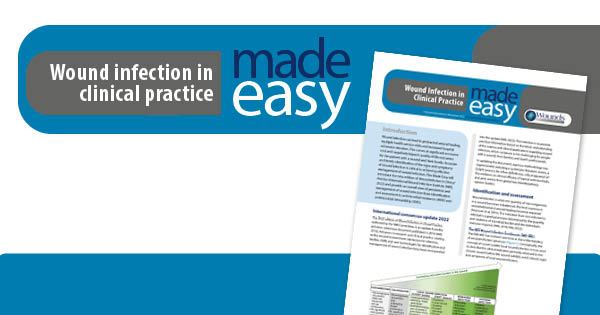Slough can be defined as “non-viable tissue of varying colour (e.g. cream, yellow, greyish or tan) that may be loose or firmly attached, slimy, stringy or fibrinous” (Haesler et al, 2022; International Wound Infection Institute [IWII], 2022). Slough consistency is determined by the tissue’s hydration status and interaction with the dressing material, as well as the depth and type of non-viable tissue (Wounds UK, 2013; Atkin, 2014).
Slough can be found in both acute wounds, such as dehisced surgical wounds, skin tears and other traumatic wounds and skin grafts, as well as in chronic wounds, such as diabetic foot ulcerse (DFUs) pressure ulcers and venous leg ulcers (Percival and Suleman, 2015).
A simple explanation of slough for patients is generally a “yellow/white layer of dead skin [tissue] in the wound, that can prevent or slow down healing” (Harding et al, 2020). Slough can be unpleasant and disturbing for the patient, and difficult to manage clinically as it prevents dressings and topical treatments from supporting the underlying viable tissues (Pritchard and Brown, 2013). Slough or necrotic tissue can promote bacterial growth and biofilm formation, inhibit the penetration of antibiotics, prevent the formation of granulation tissue, and subsequent re-epithelialisation, and interfere with wound contraction (Steed, 2004; Lewis et al, 2008; Ramundo and Gray, 2008).
The scale of the problem
While slough is under-reported in the literature, it is known to be a feature of non-healing wounds (Pritchard and Brown, 2013). In the United Kingdom, Guest et al (2020) reported that there were an estimated 3.8 million patients with a wound managed by the NHS in 2017/18, of which 70% healed in the study year (89% and 49% of acute and chronic wounds healed, respectively); an estimated 59% of chronic wounds healed if there was no evidence of infection, compared to 45% if there was a definite or suspected infection.
In the United States, Medicare cost estimates for acute and chronic wound treatments range from $28.1 to $96.8 billion. The highest expenses are associated with surgical wounds, followed by DFUs, with a higher trend toward costs associated with outpatient wound care compared with inpatient (Sen, 2019). In Australia, DFUs approximately affect 50,000 people, costing healthcare systems an estimated $1.6 billion, and resulting in 28,000 hospital admissions and 5000 amputations each year (Chen et al, 2022). Increasing health care costs, an ageing population, recognition of difficult-to-treat infection threats, such as biofilms, and the continued threat of diabetes and obesity worldwide make chronic wounds a substantial clinical, social and economic challenge (Sen, 2019).
The impact of living with a wound carries a substantial personal cost and can have a significant effect on daily life and overall wellbeing (Moore et al, 2016). Individuals living with wounds report feeling unsupported and uninvolved in decisions about their care (Harding et al, 2020). This can lead to psychological issues, such as anxiety and depression (Wounds International, 2012).
Management of slough in practice
Debridement is regarded as an essential component of wound preparation and management (IWII, 2022) and is defined as “the removal of devitalised (non-viable) tissue from or adjacent to a wound”.Debridement promotes a stimulatory environment by removing and managing exudate, while also creating a window of opportunity where biofilm defences are temporarily interrupted, allowing for increased efficacy of topical and systemic management strategies (Wolcott et al, 2010; World Union of Wound Healing Societies [WUWHS] 2019; IWII, 2022).
Debridement should not be confused with wound cleansing, which is “actively removing surface contaminants, loose debris, non-attached non-viable tissue, microorganisms or remnants of previous dressings from the wound surface and its surrounding skin” (Haesler et al, 2022).







